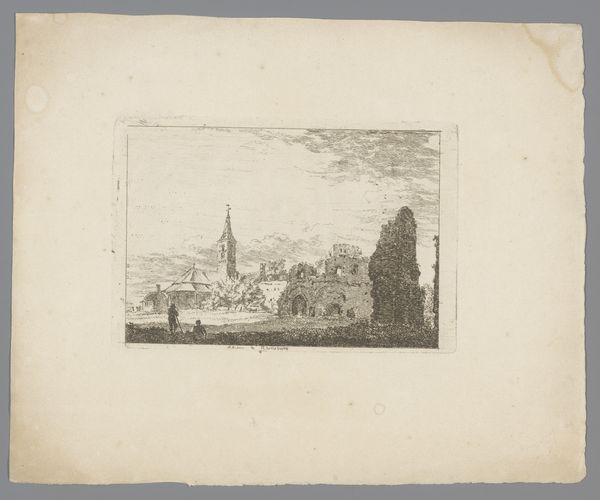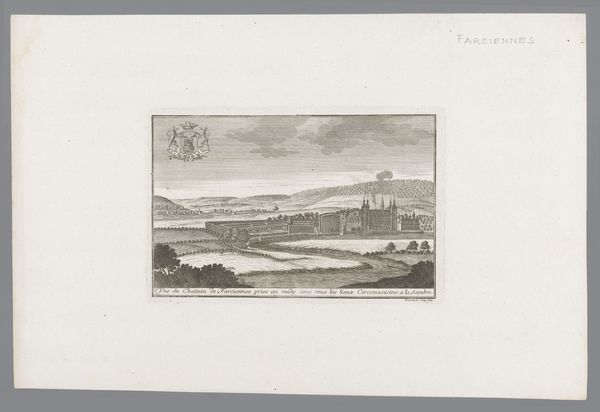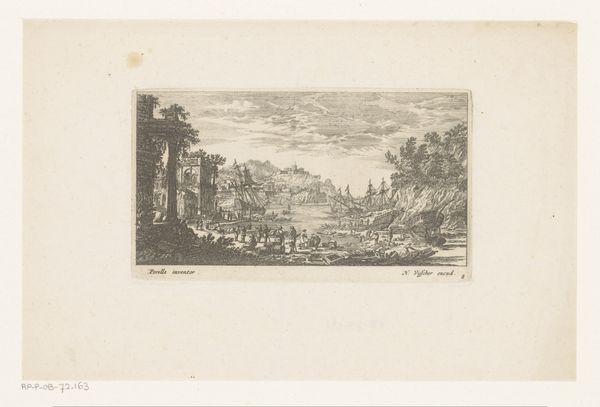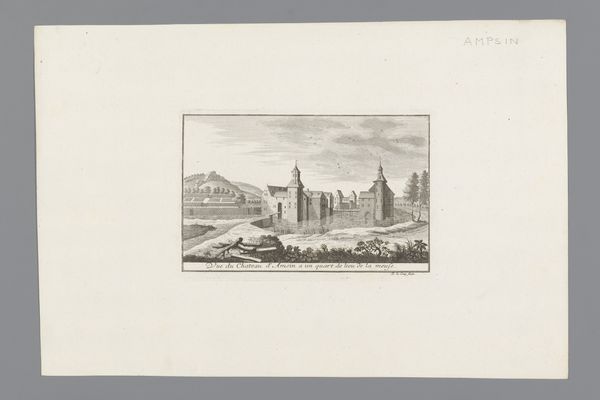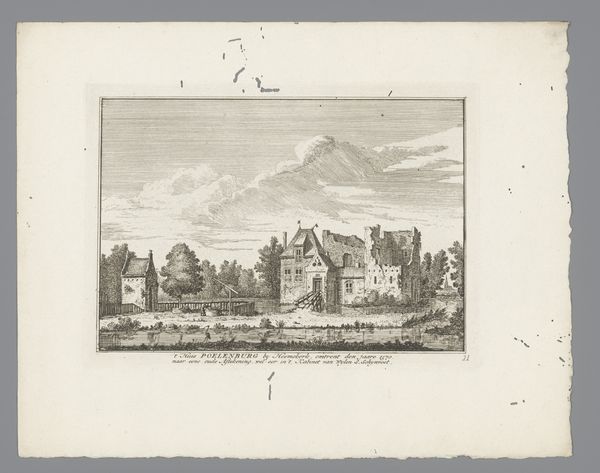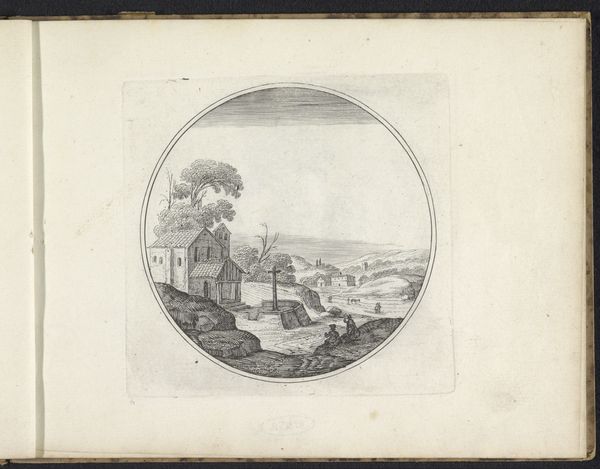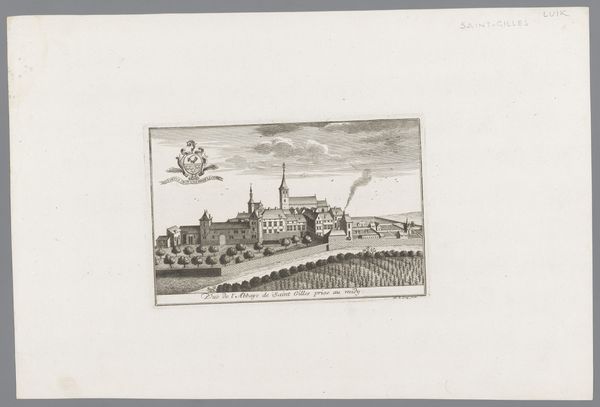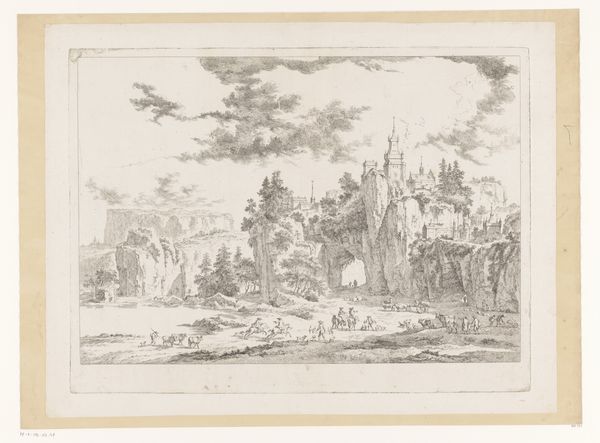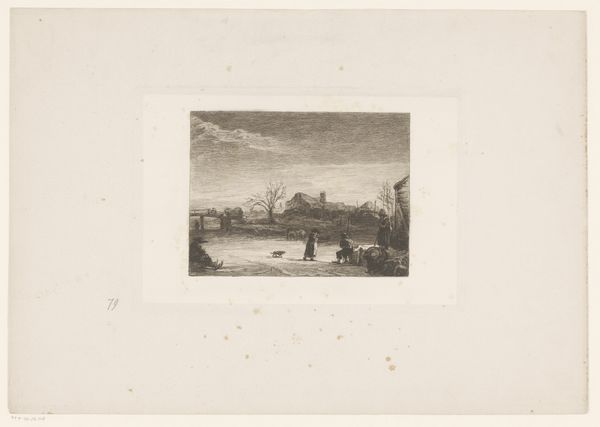
print, engraving
#
baroque
# print
#
landscape
#
perspective
#
cityscape
#
engraving
Dimensions: height 144 mm, width 220 mm
Copyright: Rijks Museum: Open Domain
Curator: This is a rather fascinating cityscape by an anonymous artist, entitled "View of the Collegiate Church of Saints George and Oda in Amay," dating from about 1738 to 1744. It's an engraving. Editor: There’s a striking starkness to it, a precision almost like a blueprint. It feels very constructed, meticulously laid out. It's the kind of image meant for circulation. Curator: Exactly. Consider the engraving technique. It allows for multiple, identical reproductions. These kinds of images were essential for disseminating ideas about urban planning, projecting power through architecture. What do you notice about the actual labour here? Editor: The detail is impressive, from the rendering of the church spires to the individual roof tiles. This would require enormous amounts of focus, an artisanal method becoming industrial...almost. The lines dictate value in place of pigment: the density suggests shade and vice versa, it feels modern even if the image itself doesn't. Curator: And that precision speaks volumes about the intended audience. Cityscapes like these were often commissioned by wealthy patrons or civic leaders to showcase their accomplishments, a kind of visual propaganda. We need to contextualize these sorts of depictions within the political framework of the time, the way social capital accrued. Editor: Absolutely. The church, centered and prominent, demonstrates institutional authority, of course, but what about the layout? How much is accurate representation and how much idealization? There's the hint of burgeoning urban order versus more organic growth behind it, like progress. Curator: Indeed. The artist presents a harmonious vision of the city, projecting an image of order and control. Remember, Baroque art often served as a tool for reinforcing social hierarchies. By focusing on architectural grandeur, this image implicitly celebrates power structures. Editor: Well, looking at it again now, you’ve totally shifted my reading of its initial “blueprint” feeling; it speaks to ambition on a macro scale now rather than the intimacy of skilled labor. Curator: Precisely. Every element is deployed to communicate a specific message, not just representational. These prints become commodities in themselves. Editor: Seeing that dynamic makes me rethink prints generally now... Curator: Understanding the role of prints like these helps us decode the socio-political agendas embedded in visual culture.
Comments
No comments
Be the first to comment and join the conversation on the ultimate creative platform.

